Wendy McGuinness heads the McGuinness Institute, a Wellington-based think tank that focuses on New Zealand’s preparedness for future risks like pandemics or climate change.
She was one of the first in New Zealand to highlight the critical role of ventilators in the Covid-19 crisis. Modelling from the McGuinness Institute at an early stage of the pandemic helped spark the private sector-Government partnership set up to manufacture and import additional ventilators and other personal protective equipment into New Zealand.
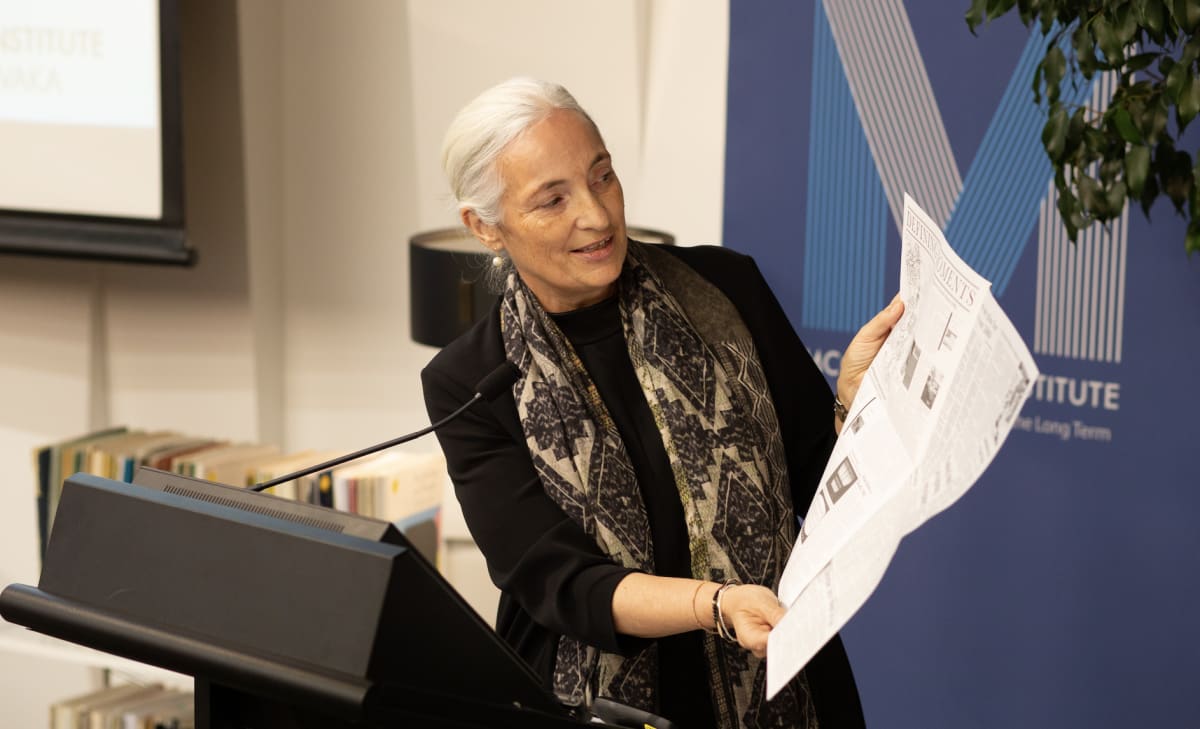
Now she’s calling on the Government to urgently consider holding off ending Level 4 lockdown for two-four more weeks to give New Zealand the option to eliminate Covid-19 in the community and move cleanly to an open local economy.
Cabinet has spent the day debating whether to come out of Level 4 lockdown this week and a decision is expected at 4pm.
McGuinness’ modelling has come up with two scenarios for the next 18 months.
Short-term pain, long-term gain
The “short-term gain, long-term pain” scenario (McGuinness’ Option 2), is one the Government is considering today. It involves moving to Level 3 on Thursday, with some businesses reopening, schools taking some students, and hospitals doing more elective surgery.
Under this scenario, McGuinness sees New Zealanders moving down – but also up – through lockdown alert levels 3, 2 and 4 over the next 18 months, unable to live, work, study or travel freely.
Our lives and businesses remain disrupted in varying amounts until we get a vaccine and all New Zealanders are inoculated.

It doesn’t have to be that way, McGuinness says.
Under her “short-term pain, long-term gain” scenario (Option 1, below), New Zealand remains at Alert Level 4 until we have 20 consecutive days of zero new cases – possibly as early as May 15.
By then, the 540 or so people with active Covid will have also recovered.
Then we progress very quickly to Alert Level 1. All shops and businesses open, GP surgeries and hospitals work pretty much as normal, we travel freely within New Zealand knowing we won’t get sick, and children go back to school – and stay there.

We go about our daily lives without worrying, McGuinness says.
We could even allow people back into the country from overseas, as long as they are strictly quarantined for 20 days when they arrive.
Option 1 versus Plan B
McGuinness’ arguments are in direct contrast to the group of so-called “Plan B” academics, whose controversial proposals to relax lockdown measures have brought on a flurry of criticism, including from Newsroom writers and commentators.
Plan B supporters argue New Zealand must stop attempting to “squash a flea with a sledgehammer and bring the house down” and that some deaths (likely of elderly or sick people) could be a necessary evil for getting the economy moving again.
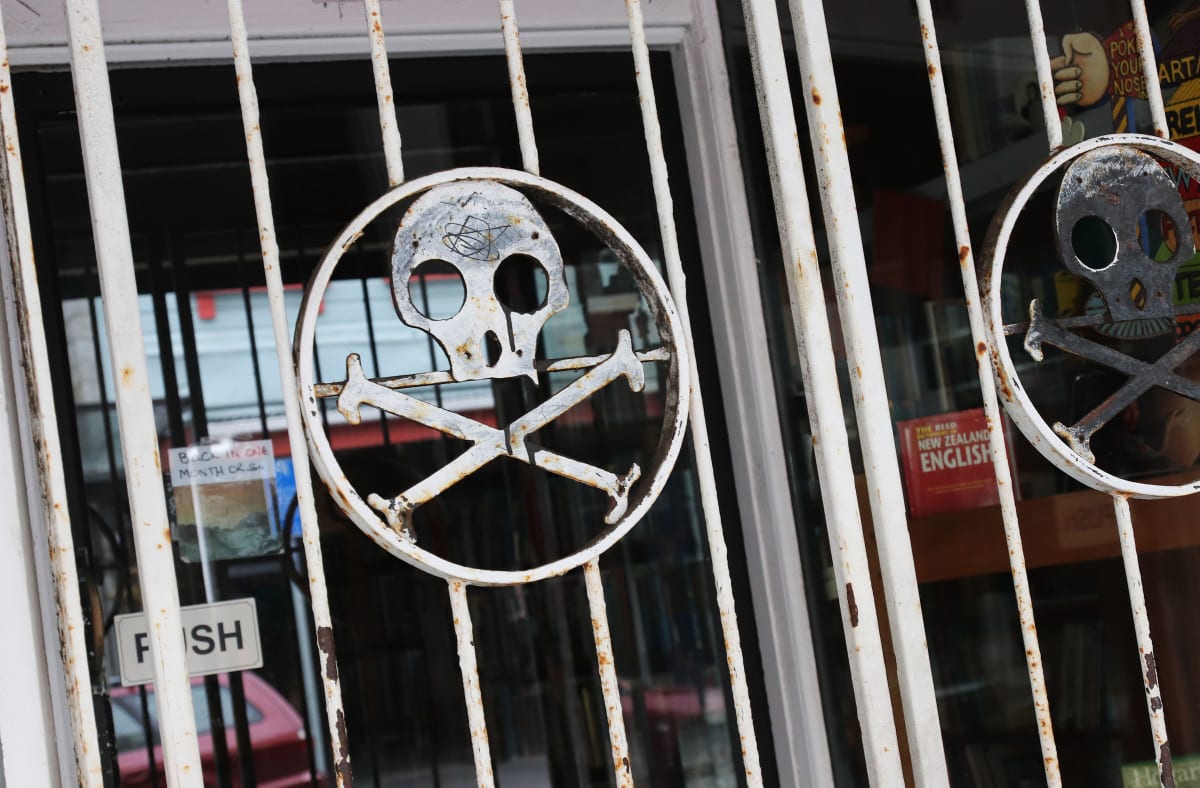
Lockdown best for economy long-term
McGuinness argues the opposite: that the economic impact for New Zealand over the next 18 months is less severe under her Option 1, with a longer Level 4 lockdown, followed by the vast majority of our time spent at Level 1, before a vaccine is introduced.
And she’s using Reserve Bank NZ figures to back up her analysis.
RBNZ’s assistant governor Christian Hawkesby told an Epidemic Response Committee meeting on April 16 (here, approximately 2h,29min in):
“In Level 4, economic activity is about 35 percent below normal, in Level 3 it’s around 20-25 percent, Level 2 about 10 percent and Level 1 it’s around 5 percent below normal.
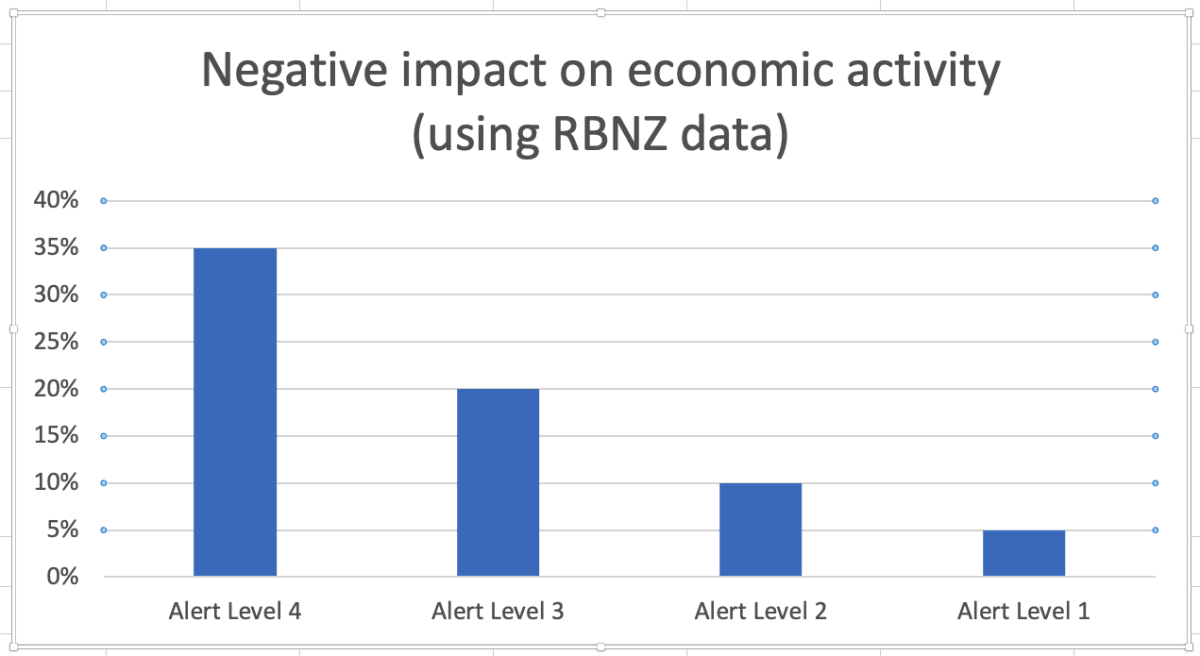
McGuinness accepts there are a huge number of variables, but says her team has taken the RBNZ numbers, made some assumptions in terms of timing and modelled the economic impact of staying in Level 4 until we have no new cases for 20 days, versus moving more quickly to Level 3 and risking continued disrupted economic activity until a vaccine is available, which she is estimating for the model will be 18 months away.
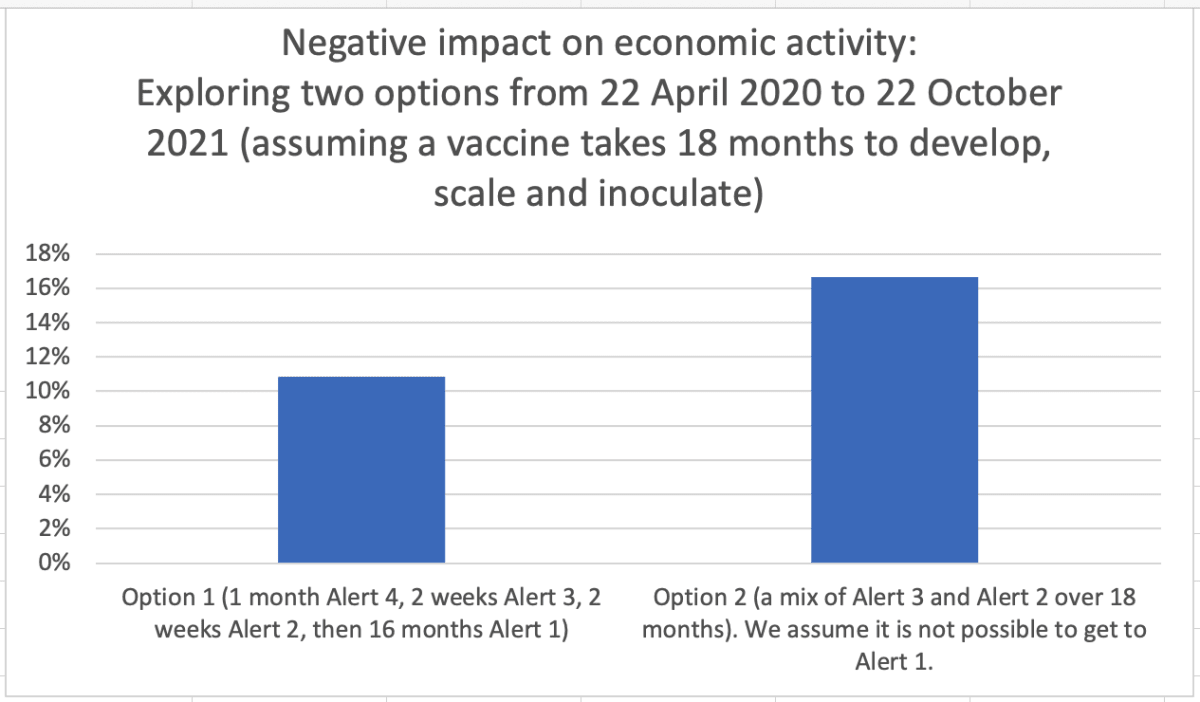
McGuinness’ conclusion about the ‘short-term pain, long-term gain’ scenario being better for the economy than the opposite appears to be backed up by RBNZ Governor Adrian Orr.
One of the worst economy scenarios is where we are bouncing between a Level 4, back to a 3, back to 4, on again, off again.
Adrian Orr, RBNZ
Speaking at the same Epidemic Response Committee meeting last week Orr said:
“One of the worst economy scenarios we can see is where we are bouncing between a Level 4, back to a 3, back to 4, on again, off again.” By contrast, “the most optimistic scenario is where we come out of very tight lockdown and we remain out of that lockdown in various degrees of economic activity.”
And Orr appeared to suggest an additional short period of lockdown won’t make the economic situation worse.
“Differences around one week, two weeks, three weeks will be lost in the wash over the next 12-18 months.”
McGuinness says when looking at the experiences in other countries, coming out of Level 4 this week “may stop our country ever reaching Alert Level 1 in the next 18 months.
And Level 1 will deliver the best options for the New Zealand economy.
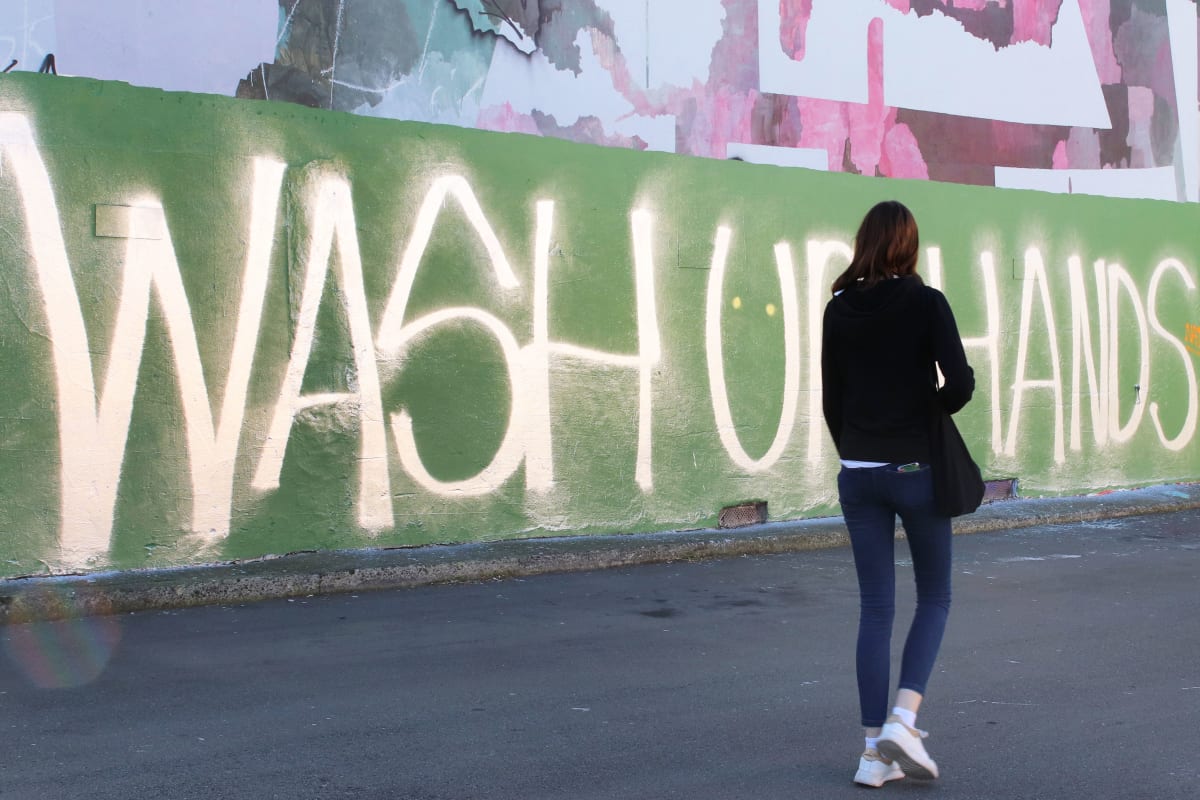
She stresses it’s not just the economic impact that is critical. The benefit for people’s health, both physical and mental, of really trying to eradicate the coronavirus will be enormous.
“Hospitals will be able to open to elective surgery and will be able to undertake the backlog without the risk of patients being infected and the healthcare workers being infected,” she says. “And I believe most people will find the uncertainty of moving between alert levels 3 and 2 taxing; we thrive on certainty.”
Second wave
McGuinness’ concern about relaxing lockdown too early is backed up by international news reports of countries or regions that appeared to be on top of the virus, but are now reporting a lift in cases.
These include South Korea, Japan’s Hokkaido region, SIngapore, and even China’s Henan province.
International scientists are increasingly warning about the dangers of a “second wave” phenomenon in Covid-19 infections.
Keep pushing that virus down
McGuinness pictures Covid-19 as a fearful thing determined to spread. Something that really really wants to get into the community. At the moment, the only weapon we have to stop it is physical distancing.
Level 4 is like a hand on top of us, pushing the virus down. Lift the hand and it’s out.
“Level 4 is like a hand – it’s on top of us, pushing the virus down. That hand, that physical distancing, is the only thing we have to manage Covid-19’s fearful natural propensity to circulate.
“Lift the hand and it’s out.”
We need more hard data
McGuinness says over the last few days it has become clear there are important gaps in our information and systems around the virus.
We haven’t got infection preventative measures working effectively in rest homes and some hospitals, we don’t know how many undiagnosed people there are in the community with Covid-19 but no symptoms or minor symptoms, our PPE delivery systems are still not working effectively, and our testing and tracing regime isn’t optimal.
We also do not know how many people will be released from their bubbles under Level 3 compared with Level 4.
And the answer to this question is important, McGuinness says, because the risk of spreading the virus increases with the number of people out in the community.
“For example, if twice as many people are in the community under Alert 3, that risk is comparatively small. However, if it is say 10 times the number of people that are out compared with Alert 4, then Alert 3 brings with it a significant risk. This information is missing in the public dialogue.
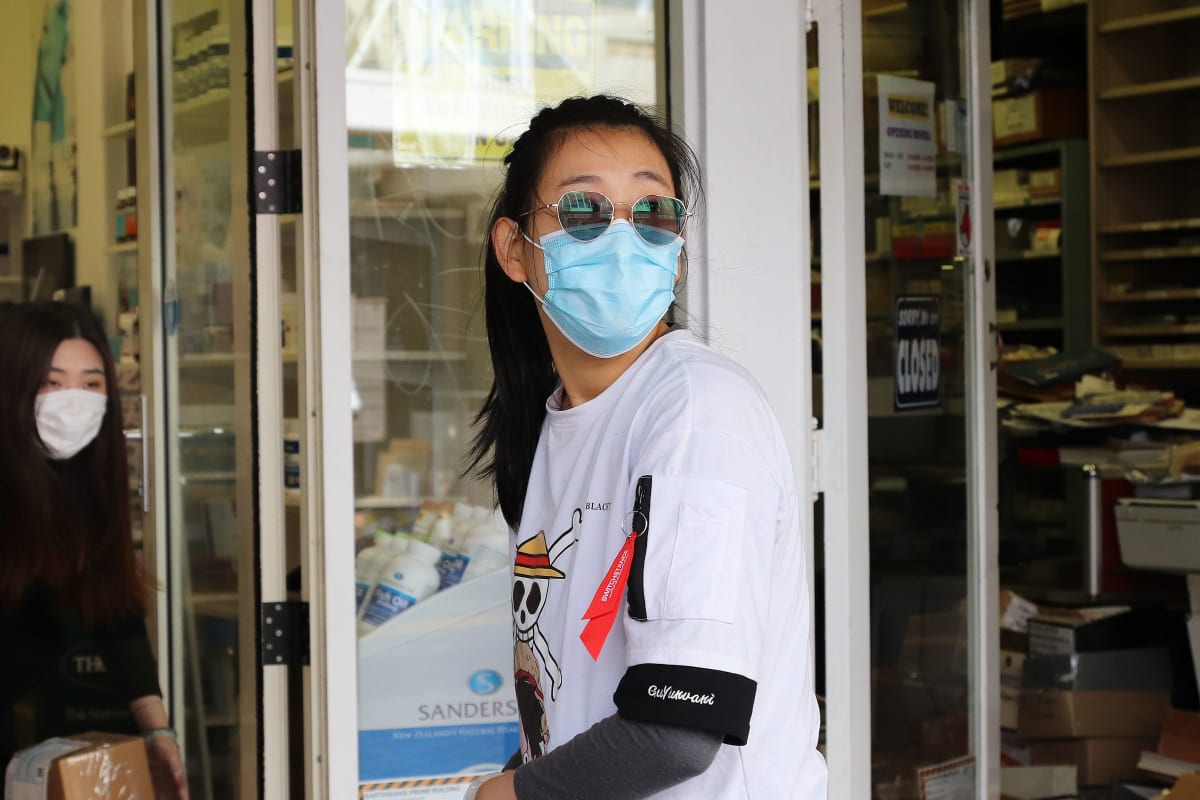
International news coverage shows people in China, Korea and Japan, going about their daily tasks wearing masks, McGuinness says.
“Should New Zealanders working in Alert Level 3 wear masks? And if there are ten times more people out working under Level 3, do we have enough masks for these additional people to counter the risk of spreading the virus?
“This is just an example of the questions that decision-makers will be grappling with.”
Elimination is a possibility
McGuinness believes New Zealand, as an island nation that closed down early, could eliminate Covid-19.
“When I started doing the modelling I was an ‘Option 2’ person,” she says, referring to her table above.
“But the more I look at this, the more Option 1 appears to be the obvious choice.
“It gives us more time to do our analysis, get the data we need. It gives us more time to learn how to decontaminate hospitals and rest homes, to get our PPE logistics working effectively.”
She points to World Health Organisation data for New Zealand, which shows we are close to eradication, though we shouldn’t be complacent – there are still blips.
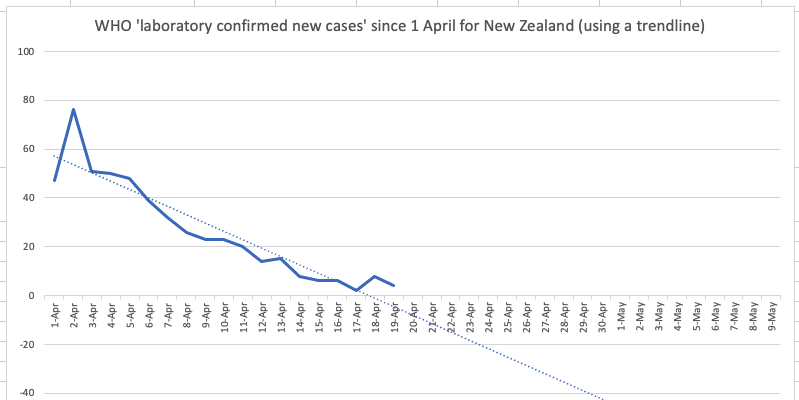
“If we hold on two, three four more weeks, maybe we could eradicate it. The benefit is not having 18 months at a mix of alert levels 3 and 2, and maybe even another 4. Having to stress about going out, stress about the kids going to school.
“Why wouldn’t you wait?”



